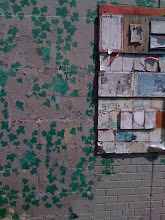
At best, the summer internship, a no-brainer for many undergraduate students, is a modestly paid opportunity to dip your toes into the deep end of the employment pool, network with interesting people, maybe live in a new city, and, if you’re a writer, score some clips for your portfolio. At worst, it’s a glorified type of indentured servitude with an occasional stipend of cold coffee and yesterday’s newspaper.
Parents, teachers, and counselors justify the unpaid internship by saying it is a character-building stepping-stone to a prestigious job in publishing, academia, or museum work. Eating stale ramen in a windowless, $1,300 per month apartment does perhaps build scharacter, and in many fields, a summer of relentless projects and relative poverty is essentially a prerequisite for later full-time employment. In this uncertain economic time, establishing working relationships with industry professionals is more important than ever.
It’s an intern-eat-intern world out there, so how can you set yourself apart from the militant and highly-qualified pack during an interview? Once you’ve proofread your résumé, firmed up your handshake, and compiled a list of thoughtful questions to ask, the real work begins. With an interview, you’ve got about 20 minutes to convince a suspicious employer that you, a college student most comfortable in a uniform of sweatshirts and pajama pants, are ready for the big leagues.
One of my former bosses told me that while a good interview can compensate for a less-than-stellar résumé, a poor impression could eliminate a competitor with near-perfect grades and impressive extracurriculars. The trick is presenting yourself as calm, competent, and confident, which is easier said than done when various professions have different dress codes.
As my dad says, you should dress like you belong at the organization in order to make it easier for the interviewers to better envision you as a future member of the team. This doesn’t necessarily mean busting out the business casual. When I showed up at my first interview for a stylish women’s fashion and lifestyle magazine wearing a prim and proper pinstripe skirt suit, my ensemble revealed my self-consciousness and lack of real knowledge about the publication. So when it comes to interviews, how do you know where to wear what?
For my interviews at magazines, museums, and art galleries, I bucked business casual in favor of stylish and sophisticated ensembles that closer resembled the outfits worn by the editors and curators that I’ve met. I try to wear things that are polished and professional while still emphasizing aesthetics and creativity. My go-to interview outfit is a gray, knee-length, v-cut wool dress from Banana Republic with figure-flattering darts below the bust line and a well-defined waist. I top the dress with a cropped Gap jacket with three-quarter-length sleeves. Accessories take these staples from timeless to trendy. I always wear my favorite charm necklace and faux-pearl earrings. This winter, I will pay homage to the jewel-tone trend by pairing the outfit with my opaque amethyst tights.
Adrienne Schmoeker, a fourth-year public policy major with an econ concentration, just accepted a full-time offer to be a business analyst at Sears. To dress for corporate success, she says she always wears a gray pantsuit, teal button-up shirt, and black heels to interviews.
“[Dressing professionally] shows that you respect the occasion and whoever you will be speaking with,” Schmoeker says. She suggests that applicants for corporate jobs like hers should err on the side of conservatism. “Always over-dress,” she says. “It won’t hurt.” What works in Schmoeker’s field wouldn’t work in mine, and vice versa. Once you know what professionals in your field wear, you’ll be able to dress and conquer.
Many students apply for out-of-state internships, and our busy schedules and meager savings accounts often make it impossible to interview face-to-face. While it may be tempting to conduct phone interviews sprawled out on your bed in your grubbiest, comfiest sweats, this is a dangerous plan. Worst case scenario: You fall asleep on the phone. More likely you will sound a little tired or lackadaisical, not like the frenzied, internship-getting machine that you are.
I’ve had good experiences with phone interviews that I treated like in-person interviews. Make the effort to dress as you would for a face-to-face interview with that organization, and take the phone call in a straight-backed chair to recreate the anxiety-inducing face-to-face interrogation. Though the person on the other end of the line won’t know how great you look, dressing the part may help you sound alert and assured. Your interviewer will be able to appreciate your ensemble once you get the job!
Maybe you’ve decided to skip Kuvia and sleep through this week’s 6 a.m. calisthenics. However, the internship search is one U of C winter tradition you can’t miss. Figure out whether your interview attire should be boho-chic or business casual, and ring in the new year with a new internship. Summer will be here before we know it.

No comments:
Post a Comment